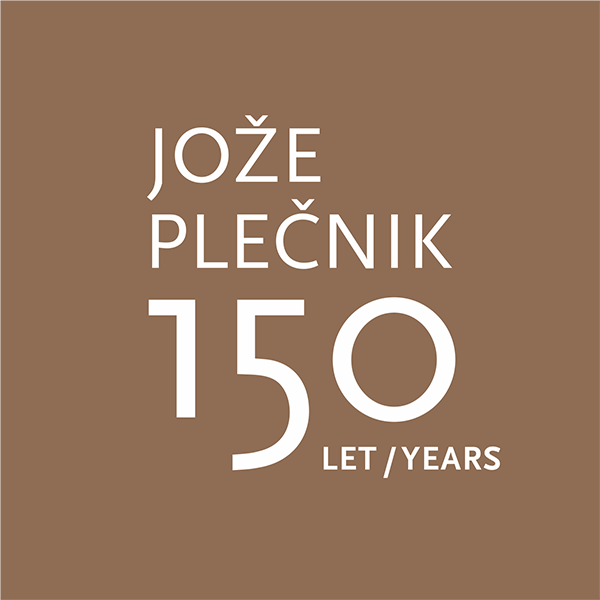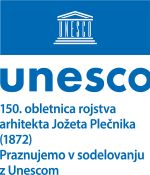Plečnik's Lectarija
… honey products and candles, craft knowledge and cooperation, friendship, love, and the stories of two families connected by Ljubljana and the Slovene architect Jože Plečnik …
New permanent exhibition Plečnik's Lectarija by the Slovene Ethnographic Museum in is part of the programme marking the 150th anniversary of the birth of the architect Jože Plečnik, which Slovenia is celebrating with UNESCO.
The plans for Lectarija, the domestic arts and craft shop on Congress Square in Ljubljana, were drawn by architect Jože Plečnik in 1939. With selected furniture, lights and small objects in his inimitable style, he created a special space and paid tribute to craft products. One source of inspiration for these plans was Krbavčič’s workshop on Trubar Street, which the architect liked to visit, and where the products made from wax and gingerbread inspired him with their harmony and beautiful materials.
The fixtures and fittings from both shops, Lectarija and Krbavčič’s candle and honey product workshop, are now museum items kept by the Slovene Ethnographic Museum. In the exhibition Plečnik’s Lectarija they are brought together to testify to the architect’s deep respect for and understanding of handicraft work. They also bear witness of the tradition and significance of candle-making and honey product crafts, the ties between the Krbavčič in Freyer families, and the memories of their descendants.
The exhibition displays the fixtures and fittings of Lectarija, the domestic arts and craft shop that was set up at 5 Congress Square in Ljubljana in 1940. The exhibited items include wooden display cabinets, a table and bench, a display window with a brass spiral which served as a support on which to arrange articles for sale, a massive round table from artificial stone, and a wooden chandelier with candles in a circle. On the wooden rim of the chandelier are imprinted short selected sayings by the architect (which rhyme in the original): From the eye speaks the soul / Time flows but says nothing / Gold does not rust / The wife makes the man. The furniture was made from Pokljuka spruce in the Hreščak joinery workshop in Ljubljana, while the spiral was made by the well-known Ljubljana metalworker and close collaborator of the architect, Alojzij Pirnat.
The shop furniture was donated to the Slovene Ethnographic Museum in 2000 by Agata Freyer Majaron and Rok Freyer, the son and daughter of Henrieta and Rok Freyer. The shop contents were restored by the museum and in 2004 they were included in the new museum building as both the museum shop and as cultural heritage. In 2021, while preparing to mark Plečnik’s year in 2022, Lectarija became a museum display and this year was incorporated into the permanent exhibition as ‘Plečnik’s Lectarija’. It is the only completely preserved shop interior designed by Jože Plečnik.
There is also a connection between Plečnik and Lectarija, and Krbavčič's candle and honey products workshop and shop that stood at 55 Trubar Street, in Ljubljana. The exhibition also presents the whole of this shop interior, the tradition of which goes back to the inter-war years, when Plečnik used to call in. Master craftsman Krbavčič’s “skilled hand” and superb products were a rich source of inspiration to him. When Krbavčič's workshop and shop closed in 1996, the son Andrej Krbavčič, the last bearer of this craft work at this address, gave up the business and passed on the whole inventory to the Slovene Ethnographic Museum. The shop fittings and equipment date from 1934, while the candles and honey products are mainly from the 1990s. The exhibition includes the personal documents of Jakob Krbavčič (1907-1988), his hand-carved wooden products, gingerbread products, handmade wooden moulds for honey breads, decorative items, various kinds of candles and additional shop equipment.
Jože Plečnik was connected with both shops and the families that ran them. He praised Jakob Krbavčič’s craft products in a letter written in 1935:
“Today, I gave two guests from Prague a pair of your Candlemas candles: the one that is wonderfully simple and beautifully twisted into a spiral and raised in the middle, and then the one that has mainly this form… These people of good taste were so very much taken with these things that I felt quite proud!”
And Plečnik’s contact with Lectarija was expressed in his short notes and correspondence with Henrieta Krbavčič, later Freyer, the main initiator of the shop. On 6 January 1941 he wrote:
“Honoured lady, please be so kind as to accept my heartfelt best wishes for the New Year. As I have nothing better, I take the liberty to offer you this as a souvenir.”
The selected work of Jože Plečnik was inscribed on UNESCO’s World Heritage List in 2021. Through the exhibition ‘Plečnik's Lectarija’, the Slovene Ethnographic Museum emphasises the architect’s less well-known work and endeavours, as well as his attitude towards handicrafts.
The author of the concept of the exhibition and the curator is Dr Tanja Roženbergar. The exhibition was prepared in cooperation with members of the Freyer and Krbavčič families: Agata Freyer Majaron, Rok Freyer, Aleš Krbavčič and Andrej Krbavčič. The museum presentation of Jakob Krbavčič’s shop is based on the temporary exhibition ‘Gingerbread making operates with small change’ (2018), curated by Andrej Dular at the Slovene Ethnographic Museum in 2018.




